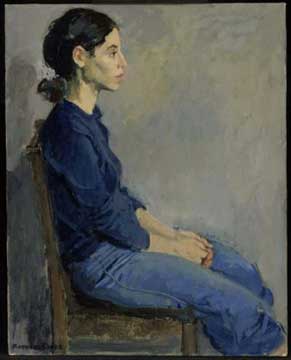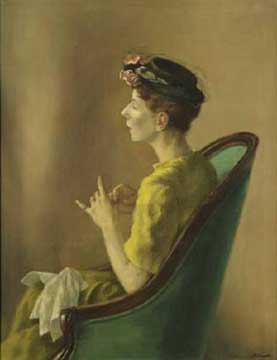Modess (Johnson & Johnson,
U.S.A.) 1927 Gilbreth report to Johnson &
Johnson about Modess - newspaper ads 1927-28 -
"Silent Purchase" ad, June 1928 - ad,
1928 - ad, April 1929 ("Don't
weaken, Mother") - ad, June 1929 ("Never
mind, Mother, you'll learn") - ad about
concealing pad, 1930 - ad compared with Kotex
ad, 1931 - ad, 1931 - wrapped
Modess pad for dispenser, 1930s? - Ad, U.K.,
1936 - True or False? ad in The American Girl
magazine, January 1947 - Australian ad, 1957
- ad (1956) with "Modess . . . . because"
ad incorporated into it - ad for "Growing
Up and Liking It" booklet (1963, Modess) - actress Carol
Lynley in "How shall I tell my daughter?" booklet ad (1955)
- Modess . . . . because ads (many dates) - French ad, 1970s? - ad,
French, 1972, photo by David Hamilton - Personal Digest
leaflets (6), 1966-67: describe Modess products - How
Modess Sanitary Napkins Began: excerpts from"A Company That Cares:
One Hundred Year Illustrated History of Johnson and Johnson"
Growing Up and Liking It (complete
booklets: 1944, 1949,
1957, 1964, 1970,
1972, The Personal Products Company, U.S.A.) (many
covers, 1944-1978)
Booklets menstrual hygiene companies
made for girls, women and teachers - patent medicine
- a list of books and articles about menstruation
- videos
 
|
 
How Shall I Tell My Daughter?
Puberty & menstruation information for mothers to tell daughters
1954, Personal Products Company (Modess), U.S.A.
Complete booklet
Of all the puberty booklets on this site I think the paintings in this
booklet best capture the intimate, thoughtful, yes, somber, mood that mother
and daughter might share when discussing menstruation for the first time
- ideally, anyway, since I'm given to understand that this kind of discussion
is the exception by far. You see none of the - forced? - cheerfulness
of many of the other booklets (for example, Growing
up and liking it, 1957) that seems at odds with the jolt many girls
experience and with the embarrassment of the mothers. But it does share
a well-to-do flavor (see the grand piano) with
that 1957 booklet although not the anatomical diagrams. And mothers and
children are white with one possible exception.
The quiet tone of these paintings, by American Alexander Brook (1898-1980,
signature), reminds me of Raphael
Soyer's paintings (scroll down beneath the cover page,
below), an American who lived almost exactly the years Brook did
(1899-1989). Both were New Yorkers and show a gritty stillness. Edward Hopper's
famously quiet paintings from roughly the same era show the same isolation
(sample below) - and Hopper was also a New Yorker. Askart.com
has this to say about Brook:
Born in Brooklyn, New York, Alexander Brook was a realist painter,
whose works consisted mostly of still-life subjects, landscapes, and figures,
often of women [emphasis
added]. He was very successful in his day, winning second prize
to Picasso's first prize at the Carnegie Institute International Exhibition
of Modern Painting in 1930.
I had never heard of this artist (and I'm a painter)
until a Dutch father of many daughters (and who had also not heard of him
before this seeing this booklet), who contributed these scans (and many
other items to MUM), wrote me the following:
I think, speaking of famous persons in relation with advertising menstrual
stuff, this is a fine piece of work of Brook for his time. Nowadays people
maybe find him somewhat depressing but I like his paintings.
Page 16: that little girl with the huge Modess
box, if you are not already scared about menstruation you will be the
moment when your mother hands over that box to you.
Personal Products Company, besides making menstrual pads, also published
booklets explaining menstruation and puberty for girls and their parents
(well, mothers), as did other companies, such as Kimberly-Clark (Kotex;
sample booklets here) and Tampax tampons (here).
See the ad the teenage Carol
Lynley, later an actress, made for these booklets, and see other
ads for menarche-education booklets: Marjorie May's Twelfth Birthday (Kotex, 1933), Tampax tampons (1970, with Susan Dey) and German o.b. tampons (lower ad, 1981); and Stayfree
(U.S.A., the Netherlands) ad with Olympic gymnast
Cathy Rigby (1982).
This booklet is meant for mothers.
The companion Growing Up and Liking It
booklets (complete: 1944, 1949,
1957, 1964, 1970,
1972, The Personal Products Company, U.S.A.) (many
covers, 1944-1978)
How shall I tell my daughter? [Daughter
in the 1969 edition] (complete booklets, 1963,
1969, Personal Products Co.) See covers
of Modess booklets. Excerpt about how to
fasten a pad to a belt and about sanitary panties & a funny story from
the 1969 booklet.
Modess (Johnson & Johnson, U.S.A.)
1927 Gilbreth report to Johnson & Johnson
about Modess - newspaper ads 1927-28 - "Silent Purchase" ad, June 1928 - ad, 1928 - ad, April 1929 ("Don't
weaken, Mother") - ad, June 1929 ("Never
mind, Mother, you'll learn") - ad about
concealing pad, 1930 - ad compared with Kotex
ad, 1931 - ad, 1931 - wrapped
Modess pad for dispenser, 1930s? - Ad, U.K.,
1936 - True or False? ad in The American Girl
magazine, January 1947 - Australian ad, 1957
- ad (1956) with "Modess . . . . because"
ad incorporated into it - ad for "Growing
Up and Liking It" booklet (1963, Modess) - actress Carol
Lynley in "How shall I tell my daughter?" booklet ad (1955)
- Modess . . . . because ads (many dates) - French ad, 1970s? - ad,
French, 1972, photo by David Hamilton - Personal Digest
leaflets (6), 1966-67: describe Modess products - How
Modess Sanitary Napkins Began: excerpts from"A Company That Cares:
One Hundred Year Illustrated History of Johnson and Johnson"
I thank the Dutch contributor of these scans,
father of many daughters.
|
Below: Front cover. Each page measures
about 6.5 x 8.25" (16.5 cm x 21 cm). The back cover is
blank except for "lithographed in U.S.A." in tiny print.
|
|
|
|
|
Below: right: Alexander Brook, Amalia,
from
Askart.com.
Brook illustrated this booklet.
|
 |
 |
|
Below: Edward Hopper, Chop Suey
(detail), from artchive.com.
Compare the silence of this with many of the illustrations in this booklet.
I find Hopper unnerving when I see many of his paintings in a short period
of time; his 2007 show at the National Gallery of Art, in Washington, creeped
me out unlike the Japanese art at the nearby Sackler and Freer galleries,
which was (and is) often luscious eye candy, the epitome of retinal art
for me.
|
 |
© 2008 Harry Finley. It is illegal to reproduce or distribute any
of the work on this Web site in any manner or medium
without written permission of the author. Please report suspected violations
to hfinley@mum.org
|